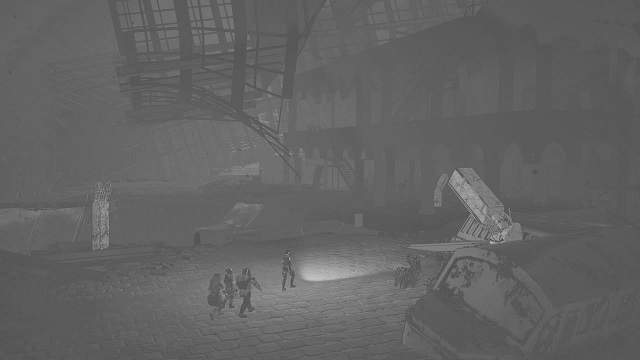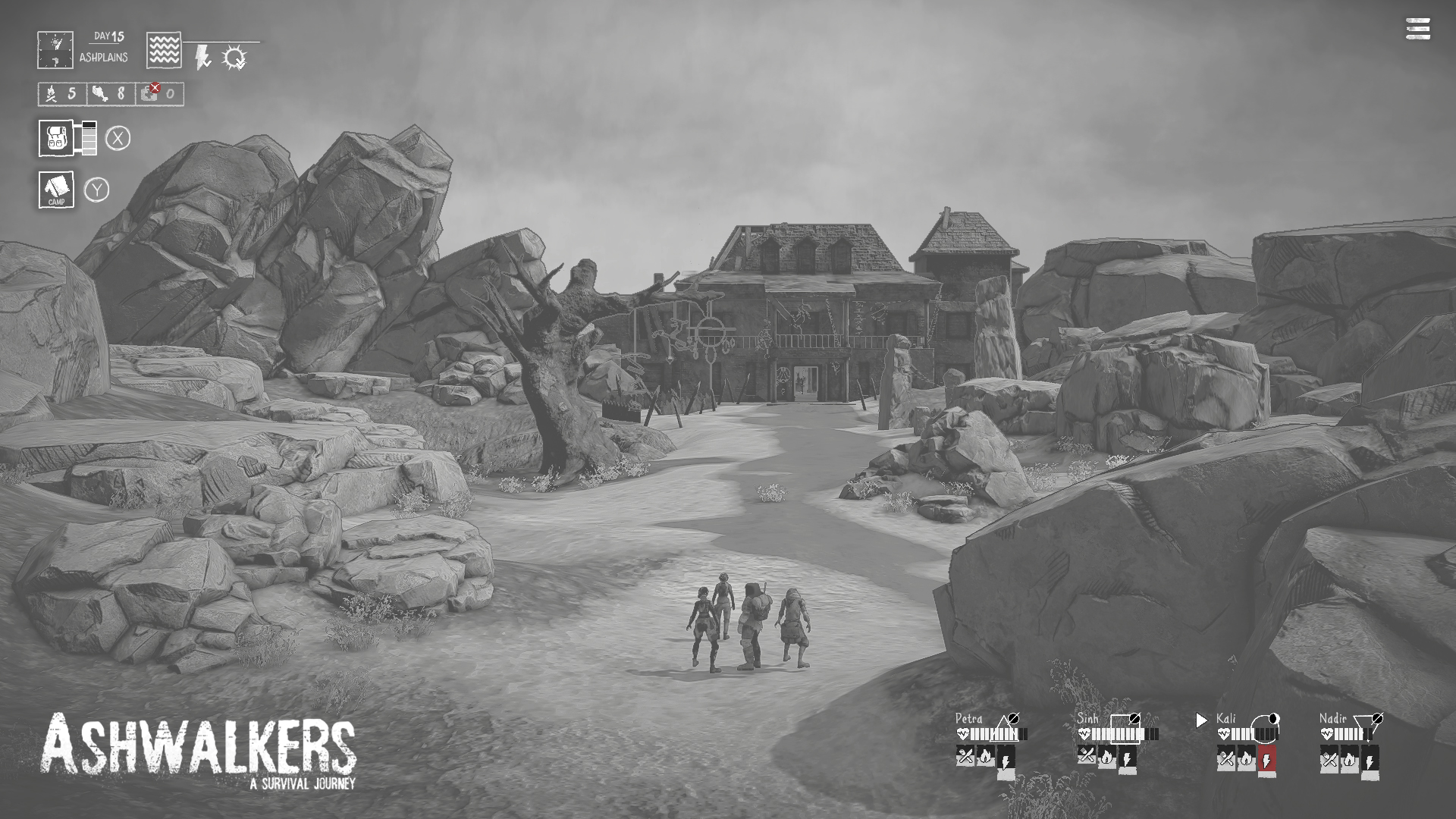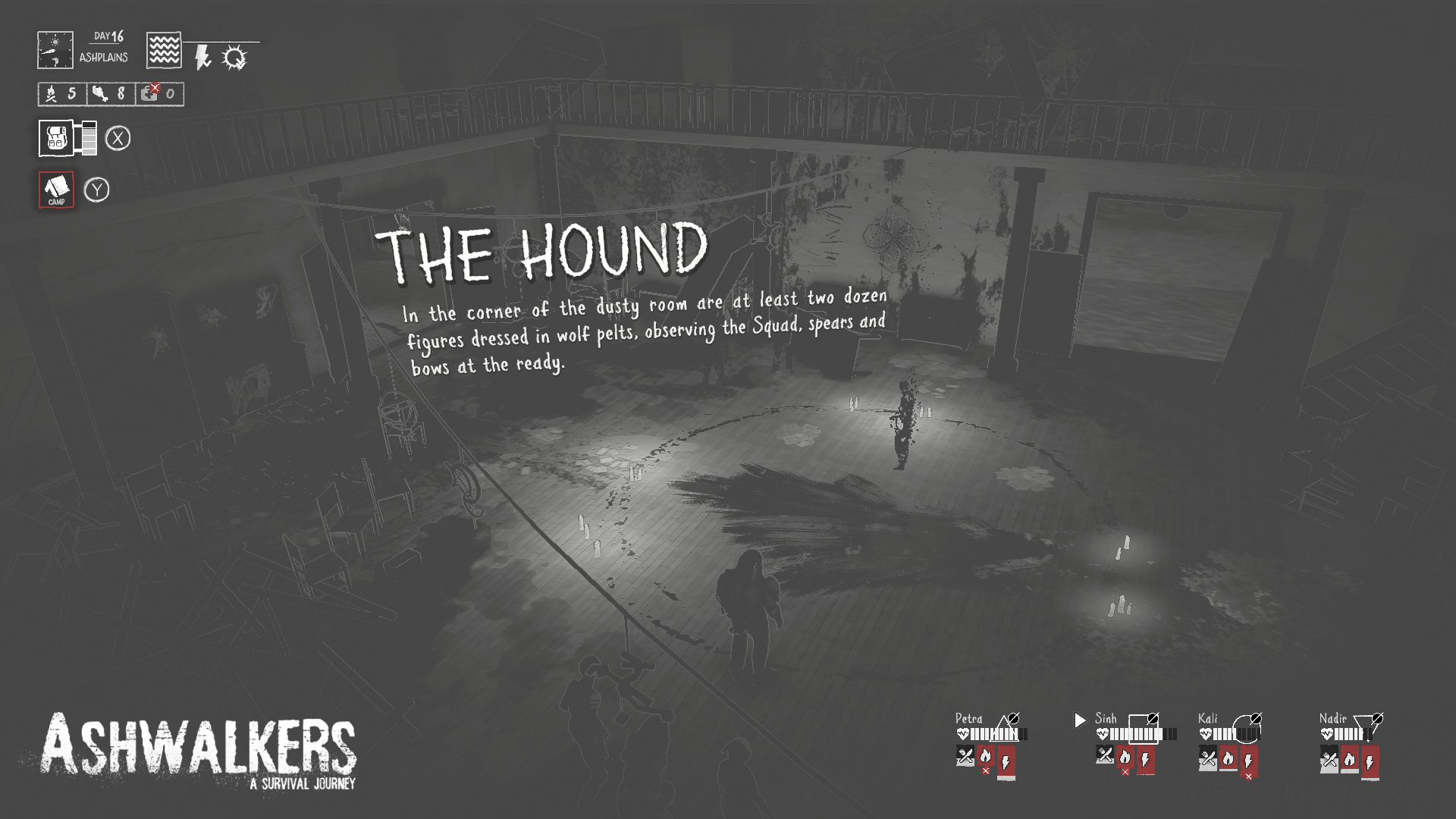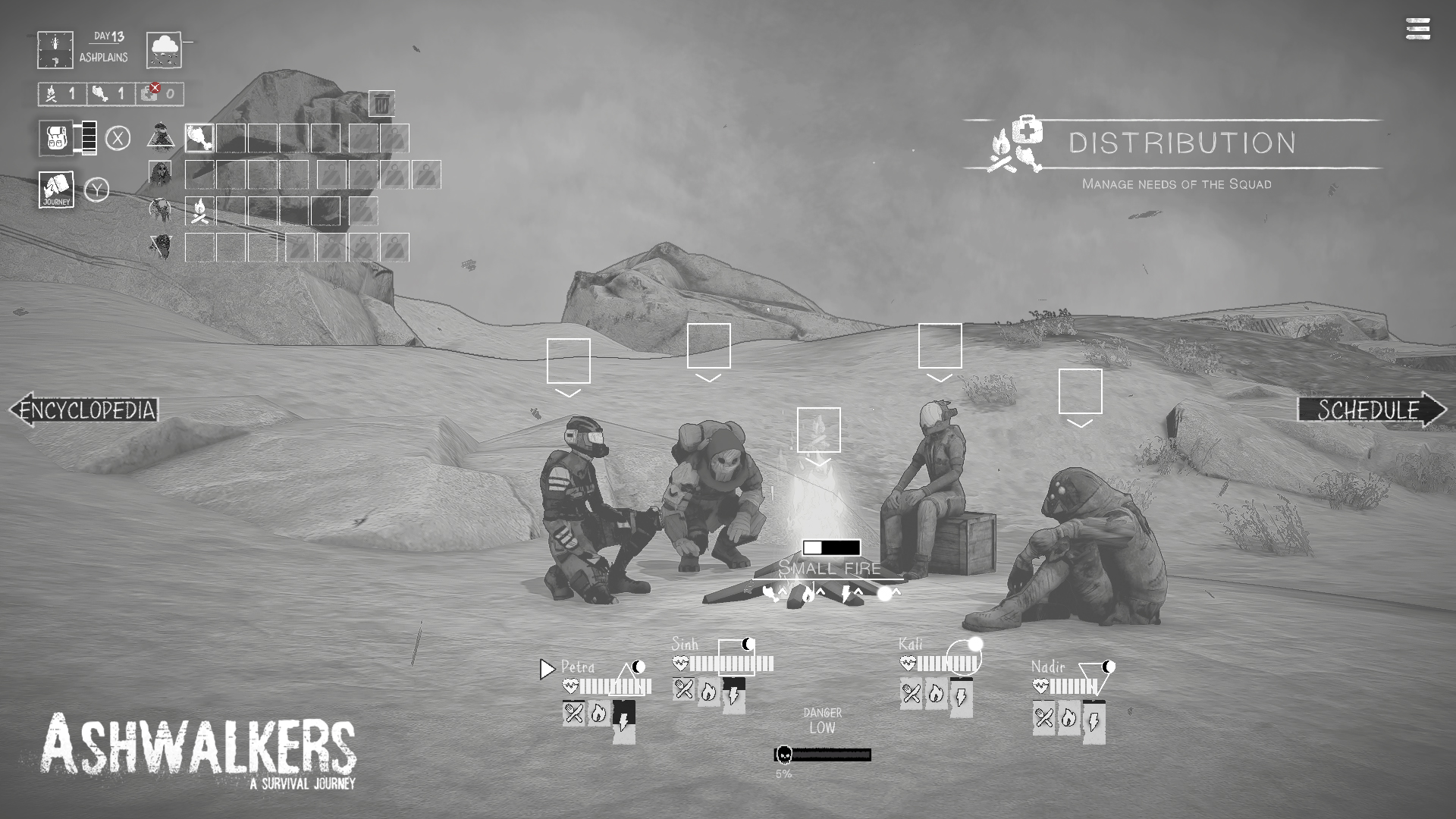Whether you attribute the quote to Hemingway or Cohen, there being a “crack in everything” to allow the light is a picture-perfect analogy for Ashwalkers, once a student project that was eventually backed by a publisher and produced by the co-creator of Life Is Strange.
Ashwalkers is an often bleak, always deliberate game, and though I admit I love a game that starts, stays, and ends with such desolation, I also greatly appreciate Ashwalkers for its moments of hopefulness, those places where the light gets in.
Throughout this ever-branching post-apocalyptic story, players have the chance to fight, flee, bargain, or outwit in many different ways on a road trip they’re not likely to survive. Such an excursion makes for some captivating character work that the player greatly and satisfyingly guides with their own moral compass.
Ashwalkers Review: How the Light Gets In
Ashwalkers tells the story of The Third Squad, a group of four scrappy survivors in a post-geological disaster world. Their mission is simple: find The Dome of Domes, an alleged haven big and functional enough to accept their population of desperate people. This third-person narrative adventure game gives players full control over all four characters as they move across a barren wasteland seeking salvation.
Each character, Petra, Sinh, Kali, and Nadir, is not a blank slate. Just as they bring their own carrying limits and secret skills to the group, they each bring their own dispositions, like Sinh’s penchant for resolving conflict with violence, or Nadir’s intent to sneak through the shadows of every encounter.
In Ashwalkers, players are constantly asked to make choices, usually one of four possible options, each attuned with a character’s personality. These choices have serious, and thus seriously satisfying, consequences.
When I came upon a group of “savages” early in my first playthrough, I could’ve fought them off. After all, the game provided enough context to understand that these Outside dwellers, like those beyond the wall in George R.R. Martin’s Song of Ice and Fire, were not to be reasoned with. But I resisted all bloodshed and ended the impasse peacefully.
Later, I came upon a larger group of these Free folk, who, because some of them recognized me, invited me into their camp for a crucial evening of respite. These sorts of unknowable consequences play out dozens of times in ways big and small in each playthrough of the game, which takes about two hours or more depending on your chosen path.
You’ll never see where you’re headed, and because there are so many branching paths (for a while), you won’t even see many of the same scenes so long as you make new choices. Some moments seem to be set in stone, not just in that they’ll always be on your path, but sometimes that you’ll even lack a safe way out of a problem.
I was always most satisfied to escape a conflict without violence, often not running away from others because we settled things so peacefully. As the game goes on and the group becomes more irritable, hungry, tired, and cold, the odds are not in your favor to find one of the game’s happier endings, but there are still ways to achieve them, and more importantly, ways to achieve smaller victories along the way.
These moments express the game’s central idea of hope in a hopeless world, that we could often see eye-to-eye with supposed enemies, even nonhuman enemies, like massive birds that sought to eat us, only to settle for some of our admittedly dwindling rations.
The game’s plan of othering people outside your collective is effective. You never quite know who to trust. But it was for that reason it was so rewarding when I’d not react hastily and instead of leaving a trail of blood, made new allies that would pave a safer road ahead.
That’s not to say the world is always so willing to oblige your diplomacy. On the contrary, the need to manage food, warmth, fatigue, and health means you routinely stop to set up camp, only to be attacked by hungry rats or ransacked by nighttime ne’er-do-wells. There are still those out to fend for only themselves, and in the game’s impressive bundle of 34 different endings, some of these selfish folk are not the one-scene NPCs who run off with your food. They may be the leaders of pivotal groups in the game’s final moments.
While much of the game is simple pointing and clicking, complete with some pretty basic animations that don’t inspire immersion, this casual approach belies the much deeper systems at play in Ashwalkers. Much of the game feels like a tabletop RPG, with even the voiceless story playing out in rich prose written like a dungeon master’s latest chapter.
Stopping to set up those aforementioned camps includes its own skill-check system where the longer you stay and make noise, the more likely you are to draw unwanted attention. Ashwalkers even visualizes this with a percentage chance of trouble shown at the bottom of the screen during camping sections.
You’ll have to decide who gets to rest, who gets to eat, who is on guard duty, and who might just sit and chat. Assigning any two or more characters to that lattermost duty reveals a lot more about the world and these characters, making it an enticing option if you can spare the volume and lack of sleep.
In one of a few endings I witnessed, I felt as though things were wrapped up rather abruptly, which causes me to wonder how many more of the game’s 34 endings leave something to be desired. Still, the destination is always a smart, slow-moving drama I loved having a hand in.
In my first playthrough, I dodged nearly every combat scenario, usually by using diplomacy. The ability to get out of every fight like that in an unruly world like Ashwalkers is unheard of, but here it feels natural because it was my trading, my words, and my quick thinking that got us out of some messes. And when those tactics didn’t work, it still felt earned.
Along with the game’s slow-crawling music and black and white visuals, the bleakness runs deep throughout Ashwalkers, but there are still ample opportunities for players to let the light in, and doing so was, in my experience, always the most rewarding outcome.
Ashwalkers Review — The Bottom Line

Pros
- Interesting original setting and characters
- Varied, mostly faithful use of choice-driven storytelling
- Inventive mix of survival, RPG, and adventure game mechanics
- Subsequent playthroughs reveal new locations and scenarios
Cons
- Simplistic animations hinder the story somewhat
- Ending quality varies
Ashwalkers should be one of the year’s darkest games, and I suppose multiple endings being tied to your party dying out means it still is quite dark. But the best parts of this game come when you’re shown how terrible everything has gotten, and the game still allows you to argue that might doesn’t make right.
The game suggests it’s commendable, sometimes even brave, to not lose sight of altruism in a world that forgives and rewards selfishness. From its bleak, monochromatic world to one of our own that can be just as unkind to the downtrodden, Ashwalkers leaves a memorable message to take away from this ambitious game.
[Note: Dear Villagers provided the copy of Ashwalker used for this review.]









Published: Apr 13, 2021 01:55 am